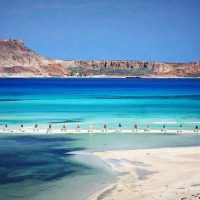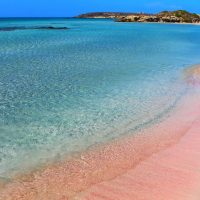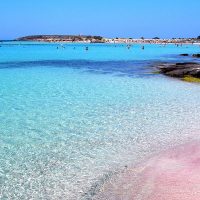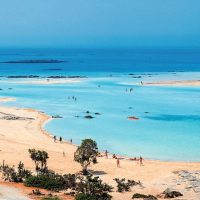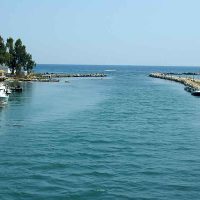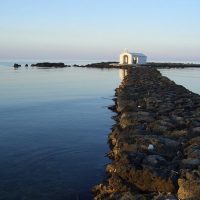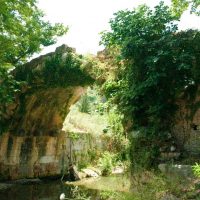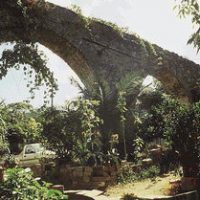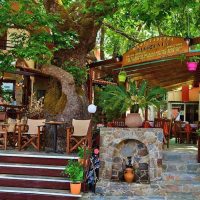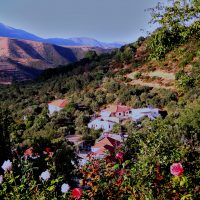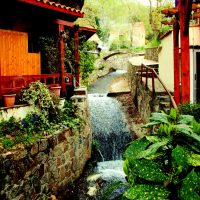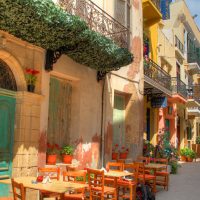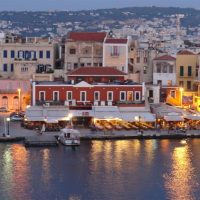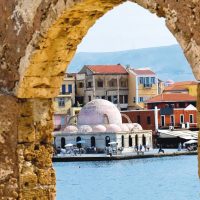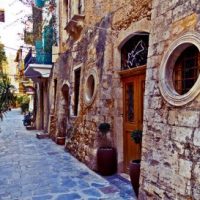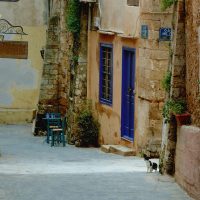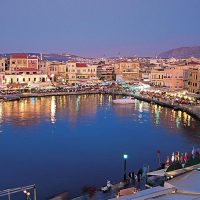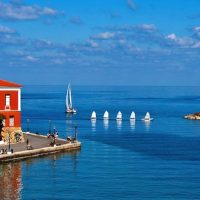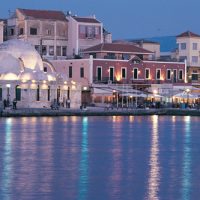TOUR 2 – 28 June 2017
TOUR 2 – 28 JUNE 2017, WEDNESDAY
EXPLORE THE WEST & SOUTHWEST CRETE!
.
ELAFONISSI
Elafonisi, so called pink sandy beach, is located 76km west of Chania and 5km south of Chrysoskalitisa Monastery, in the southwesternmost point of Crete. Elafonissi is a magical place that consists of a small islet full of white and pink sandy beaches. Exotic beaches with white sand and turquoise waters, reminding of the Caribbean, are formed on either sides of the peninsula. The sand is pinkish in many places, taking its color from thousands of broken shells. Near the “breaking” point of the peninsula, the water does not exceed 1m, creating a small lagoon that you can easily cross in order to reach the “island”. Elafonisi is a Natura 2000 protected area. The island is full of dunes with sand lilies and jupiners (like-cedars trees). The endangered turtles careta careta and several rare animals nest on the island and it is strictly forbidden to remove any plants, animals and sand from the area.
.
GEORGIOUPOLIS BEACH
Georgioupolis is a small seaside town, situated in a lush valley filled with rivers and springs. The town lies on the western edge of a vast long beach with 10km length. Georgioupolis is set in a green countryside with a large beach stretches 2km to the east, starting from the river Almiros and ending in Kavros beach, which is a natural extension of the first beach. Entering the town you see many eucalyptus trees, both along the road and in the main square. Like all coastal front of the area, Georgioupolis beach is sandy with large dunes and shallow waters.
.
ELOS VILLAGE
Elos is a small village with few stone houses where its inhabitants are mostly engaged in agriculture cattle breeding. Elos is one of the most attractive old villages of the Kissamos prefecture, with green surroundings and natural water sources.The village is surrounded by lush greenery, olive groves and plane trees.The area around Elos is known for its natural beauty.. You’ll find the largest number of chestnut trees on the island of Crete and there are special reptiles, birds and rare birds of prey, and special plants and flowers to be seen. Elos is surrounded by chestnut trees, which form picturesque scenery and, of course, bring the harvest. To mark the coming autumn and proudly demonstrate the chestnut harvest, local population devote a special attention to the Chestnut Festival.
In Elos you can find an old Turkish aqueduct, the remains of a large old mill and the Byzantine church of Agios Ioannis, which dates from the 14th century.
.
CHANIA TOWN
The city of Chania is built on the area of Minoan Kidonia, at the end of the homonym gulf between Akrotiri and Onicha peninsulas. It was the former capital city of Crete (from 1847 until 1972). Nowadays, it is the second largest city of Crete after Heraklion. Chania includes the old and new city. It is one of the most beautiful and picturesque cities in Greece and for food lovers, it’s a paradise! Our guided walking tour will help you get familiar with the city of Chania by wandering around in its streets, visiting its stores and admiring the different architectural styles presenting the historical route of the city.
The atmosphere in Chania has a touch of Florence and Venice, combined with the culture and character of Cretan people and traditions.
.
.CHANIA PORT
The Chania old town is built around the Venetian port and is also a relatively integral area where Venetian buildings and later Turkish elements compose a unique architectural style. Due to the historic center of Chania with its Venetian walls defining the borders between the old and new city and its ramparts, the city has been pronounced as preserved. It consists of five connected districts surrounding the Venetian port.
The Chania harbour is a very picturesque at any particular time of day light produces a different result, creating a “different place”.
Visiting Chania is the best chance to see some of the old buildings – of Venetian and Turkish design, that Crete once had across the island.
.




